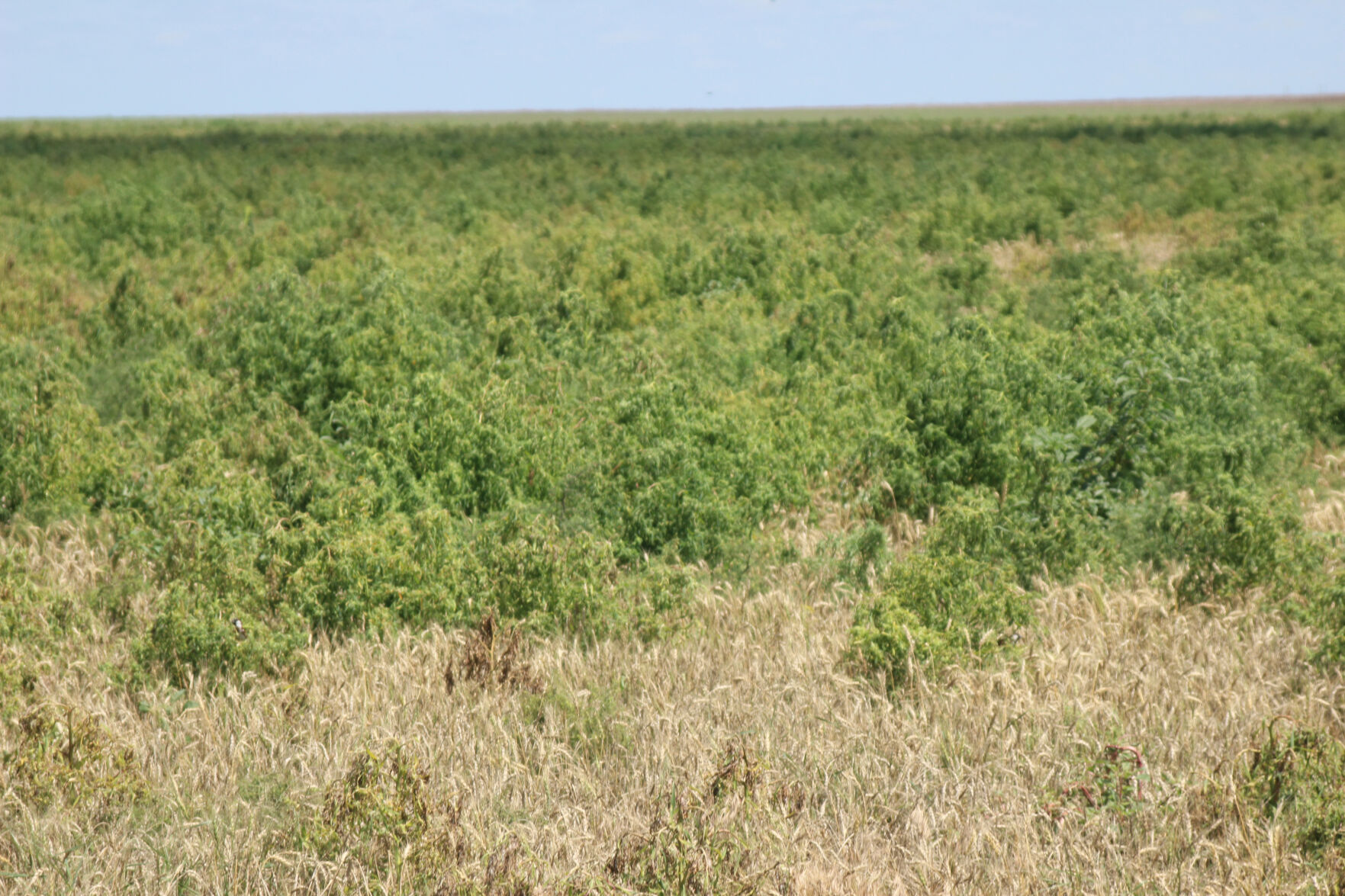What has become a familiar story in recent years is a tale of two growing seasons and ramifications that go with it.
Sarah Lancaster, assistant professor and weed science Extension specialist in the department of agronomy at Kansas State University, said this year has its own unique challenges with recent rains.
Year in and year out, the most troublesome weed in summer crops west of the Flint Hills is Palmer amaranth. In central and western Kansas, Palmer amaranth is closely followed by kochia for some farmers, she said. In eastern Kansas, waterhemp is the predominant weed for summer crops.
“Those are the worst weeds we’re seeing in wheat right now, as well. The dry fall and spring reduced emergence of many of the winter annual weeds we consider typical in wheat, but the thin canopy has let summer annual weeds emerge,” Lancaster said. Producers are going to need to evaluate their strategy. If a farmer finds himself in a position where residual herbicides are not effective or were not applied, the sooner he addresses the problem the better. Some producers like tillage, like sweep plows in central and western Kansas, she said. However, it will take longer for the ground to dry out enough for tillage compared to spraying. One of the most important practices for a herbicide program is to use multiple effective herbicide modes of action.
“The mode of action corresponds to the numbers that can be found on herbicide labels, so that part is pretty straight forward,” Lancaster said. “What becomes complicated is knowing what herbicides your weeds have developed resistance to and, as we move sort of ‘back to the future’ and consider using some of the older selective chemistries, knowing what weeds each herbicide will control.”
Another point to remember is to use full rates of products—even in tank mixes, and to make sure you are using the recommended adjuvants, Lancaster said. Spray volume and nozzles can also affect herbicide effectiveness, so checking those is important, too. Even if they do everything “by the book,” it’s likely that that a dense stand of large weeds will take more than one application. One way to reduce the number of applications is to include a residual herbicide in the tank mix.
Herbicide restrictions
Farmers are in a different era as some herbicides may not be as readily available because of regulatory actions taken by the Environmental Protection Agency. Lancaster said sometimes the answer to the question is what a producer may have in his inventory.
When a herbicide is taken off the market it is legal to use product that is already on hand. However that is not always the case—for example, when chlorpyrifos was cancelled in 2022. Regardless of the language in the product cancellation, substitute products will be needed at some point, she said. Sometimes, that substitute might be a nonchemical option. There are many factors that influence which product will work best, Lancaster said.
Soybean producers also have to be concerned about herbicide drift.
For farmers concerned about causing off-target movement, their best course of action is to make sure they are following the herbicide label, she said. “For farmers concerned about being on the receiving end of drift, one approach—that needed to happen months ago—is to make sure the farmers in the neighborhood are on the same page. Once drift occurs, there’s not a lot a farmer can do.”
The best way to control weeds is to be proactive and that means not letting weeds produce seeds, she said.
For summer crops, farmers can prevent late-season emergence with an overlapping residual herbicide, Lancaster said. Some growers like spot-spraying or hand removal, depending on the number of weed scapes.
“For folks in summer fallow, being strategic with the use of residual herbicides and the timing of applications is important. As folks start to plant wheat, make sure the field is weed free. The weed management component that can be easily overlooked is scouting. Real scouting is not through the window of the pickup, If you can see the weeds from the road, you’re in a bad situation.”
Dave Bergmeier can be reached at 620-227-1822 or [email protected].




